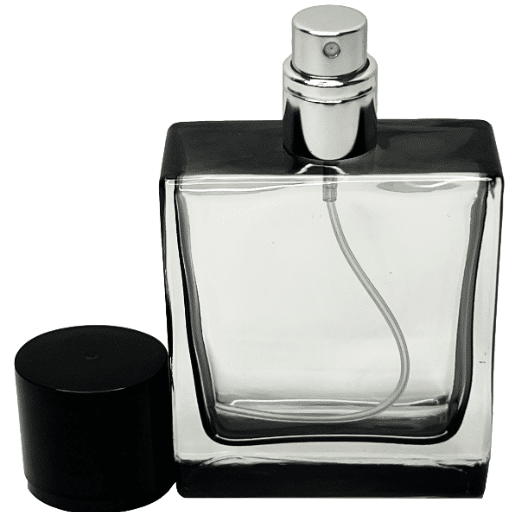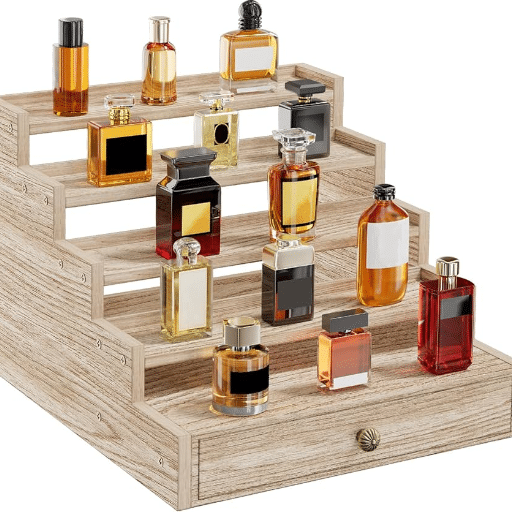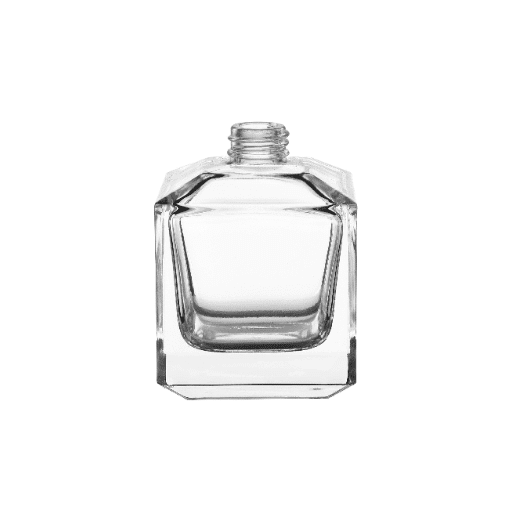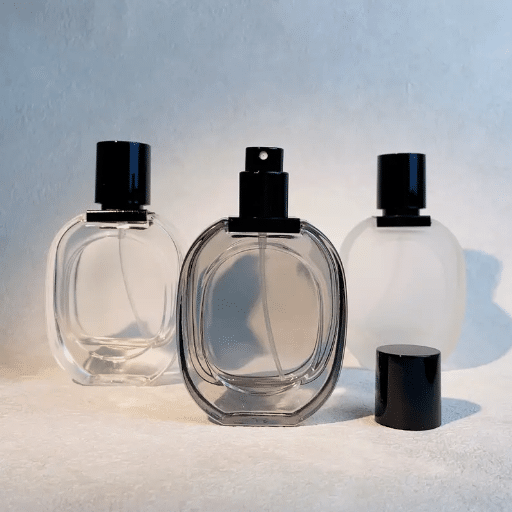The global perfume market is undergoing rapid changes, with a growing emphasis on cost reduction and eco-friendly production within the supply chain. Packaging procurement highlights typically play a significant role in driving these changes, as they directly influence both green policies and cost structures. The purpose of this blog is to explain how the packaging procurement strategy in the perfume industry can be transformed and this includes the use of green materials, rationalization of supply chains, and maintaining cost-effective and eco-friendly measures.
Understanding the Perfume Packaging Procurement Process

When considering the structure of the packaging procurement strategy for perfumes, we need to focus on a sequence of actions that aims to deliver advanced, friendly to nature and plausible for business solutions. Such a sequence consists of the following steps:
- Material Selection – Identify materials that are suitable for the objectives of the sustainability programme and align with the brand positioning. These include items such as recycled glass, biodegradable plastic, and FSC-certified paper, among many others.
- Vendor Sourcing – Identify and contact reliable suppliers who can execute the design within a specified cost and time range.
- Design and Prototyping – Collaborate with designers to create a comprehensive representation of the product, package, and brand. Prototypes help check the physical strength and execution of the product.
- Cost Analysis – Prepare a detailed cost analysis to determine the costs for materials, production, and transportation at a reasonable level of quality.
- Quality Assurance – Establish appropriate company quality indicators and execute preproduction quality control, as well as periodical inspections after production.
- Logistics and Distribution – Lead the team in managing delivery systems and schedules to enhance operations, minimize operational costs, and minimize negative impact on the environment.
Key Steps in the Perfume Packaging Procurement Process
Requirement Evaluation
Thoroughly review all packaging issues, accounting for existing branding strategy and functional characteristics of the product, and solve them fully or partially with the use of material, sustainability, or design capacity.
Supplier Identification and Approval
Study and evaluate the potential packaging suppliers in terms of their material quality, production capabilities, certifications, and compliance with industry standards.
Cost-benefit Analysis
Evaluate the appropriateness of procurement effort in accordance with the materials and components offered by each supplier in conjunction with their production capacity and shipment costs.
Quality Control
Clearly outline the required standards of quality and perform checks at various stages of production, as well as after the process is complete, to ensure fulfillment of the specified requirements.
Logistics and Distribution
Coordination of multiple elements of supply chain logistics such as packaging, transportation, warehousing and delivery to the final distributors with considerations for efficiency and sustainability.
Monitoring and Improvement
Use of feedback tools to assess the performance of packaging solutions on the market, with the intention of improving the next round of procurement.
Identifying the Right Packaging Suppliers for Perfume
The chief consideration for those engaging in the packaging procurement strategy for perfume should be the following:
- 🎯 Niche Expertise: Finding suppliers that are perfectly knowledgeable in perfume packaging is the primary task, as they will be able to meet the stringent specifications of fragrances, which include exterior finishes and vacuum fittings that prevent the scents from escaping.
- ✅ Quality Control and Assurance: Ascertain that the company follows proper manufacturing practices distinguished by such integrations as ISO certification or other procedures to ensure the quality is not compromised, nor any rules are violated.
- 🎨 Creativity: Examine how well they can provide clean, boring, and attractive utilities that include shaped bottles, different types of materials, and bottle designs that would differentiate the client’s brand and its products.
- 🌱 Environmental Aspects: Identify environmentally supportive suppliers that also prioritize eco-friendly measures, such as products made from materials that can be both recycled and refilled.
- ⏰ Capacity and Lead Times: Ensure the supplier has sufficient capacity to produce the required amount of your products and is capable of meeting your specified timelines, thereby avoiding disruptions to the supply cycle.
- ⭐ Reputation and Reviews: Investigate the supplier’s market image by taking references from their clients or reviewing their other testimonials and case studies to understand how reliable and productive they are likely to be.
Challenges in Perfume Packaging Procurement
The packaging procurement strategy has several inherent concerns, amongst which are:
| Challenge | Description |
|---|---|
| Design Consistency | It is sometimes unfeasible to maintain consistent design features across all batches, especially in cases involving multiple vendors or when there is a re-ordering time lag. It is an imbalance and a shift in the production process that affects brand standards and the customer’s perception of the brand. |
| Material Quality | The materials used must not only be safe but also strong and long-lasting, while retaining the luxury associated with perfumes. However, issues arise due to the limited availability of materials and the varying quality of suppliers. |
| Cost Control | Obtaining and shedding off expenses at the highest bidder for any particular packaging is quite a skill. Gone are the days of shoddily done work. To make matters even more uncomfortable, the costs of raw materials may be on the rise. |
| Supply Chain Dependencies | Relying solely on the procurement of materials, which still entails a lag, renders the product supply lines and assurance risky and the timetable unrealistic; hence, effective coordination with suppliers is essential. |
| Environmental Regulation Compliance | The growth attributed to green or eco-friendly packaging makes it challenging to source sustainable materials while maintaining production integrity and design intentions. |
Cost-Effective Packaging Strategies for Perfume Brands
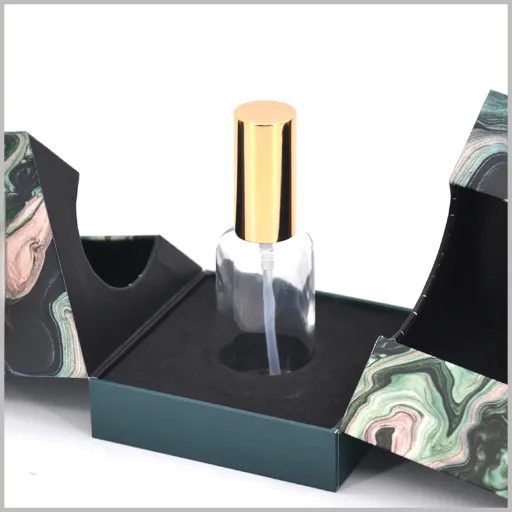
-
💰 Materials Optimization
Select affordable yet high-quality materials, such as eco-friendly glass or lightweight materials, and this balance not only covers cost but also durability and appearance. Obtaining materials from bulk sources may save a few dollars.
-
🎨 Design Simplification
Recolor the design to make it more minimalist, with fewer sophisticated elements and fewer embellishments, which reduces production costs. Sleek and innovative designs may attract customer satisfaction even at a lower price.
-
🤝 Utilization of Supplier Relations
Involve credible suppliers in the effort to secure better pricing and maintain quality as a standard. Procure forward contracts to control prices and ensure the timely procurement of materials.
-
🔧 Evolve into Modular Packetization
Implement common elements, such as universal caps and plain bottle shapes, to reduce design and manufacturing costs across different brands.
-
🌱 Incorporate Sustainable Measures
Utilize environmentally friendly packaging solutions as a strategy, which includes employing means such as reusable bottles or biodegradable materials. This not only optimises the cost in the long run but also meets the end user in a product that promotes sustainability.
Strategies for Achieving Cost Savings in Perfume Packaging
1. Material Selection Optimization
The choice of lightweight and recyclable materials, combined with cost-effective actions, is imperative to ensure sustainability. Heavy glass bottles can be expensive, especially when considering shipping costs. Materials should be obtained from local vendors whenever possible to minimize transportation use and reduce the carbon footprint.
2. Streamlined Design
A simple design for both perfume bottles and bags can be highly cost-saving. Any overly intricate shapes, embellishments, or unnecessary components should be stripped away, as they complicate manufacture and increase errors, yet retain a look of luxury. Minimally designed masterpieces that please the eye can also be created with CAD.
3. Leverage Bulk Production
Emphasizing economies of scale, standard components are manufactured in bulk, such as caps, sprayers, or boxes, by combining orders from various brands. Showing flexibility in molds or modular packaging systems is another way to reduce initial tooling costs by utilizing manufacturing partners that offer such options.
4. Advanced Manufacturing Techniques
Automation in assembly and filling processes leads to labor cost reductions and increased uniformity of output. Precision-controlled technologies, such as injection stretch blow molding and laser-cut box production, reduce waste.
5. Secondary Packaging Reliance Gets Reduced
While secondary packages, such as decorative boxes and inserts, add personality to products, their prices can be high due to such packaging. In that reference, switching to less than secondary packaging, i.e., minimal sleeves, with primary packaging used for branding, will reduce unnecessary waste and costs.
6. Adopt Sustainable Practices
In terms of investment, utilizing sustainable resources and biodegradable packaging, combined with refill systems, requires a substantial initial investment for long-term benefits. Given the growing tendency of consumers toward eco-conscious choices, an increasing number of brands are positioning themselves with the aid of sustainable packaging as their competitive advantage.
Through the implementation of the aforementioned techniques, the supply side of the perfume industry can further optimize their cost structure without compromising quality, functionality, or brand equity. Supply chain and manufacturing process audits must be continuously performed, fashioning an agile working process adequate to keep all stakeholders updated on cost-saving options and market alignment.
Embracing Sustainability in Perfume Packaging
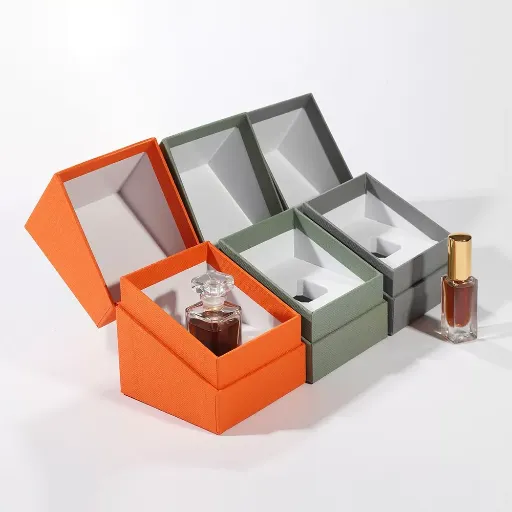
🌍 The Sustainable Revolution
A sustainable perfume package will place a greater emphasis on considerate ecological materials and design techniques.
♻️ Recycled Materials
By utilizing recycled or biodegradable materials, manufacturers significantly reduce their environmental impact.
🔄 Refillable Packages
Refillable packages prevent excess packaging. By using fewer resources, lightweight packaging reduces carbon emissions during transportation.
📊 Lifecycle Analysis
Lifecycle analysis is another valuable tool that brands can utilize to measure and enhance the sustainability of their packaging solutions.
The Importance of Sustainable Packaging in the Perfume Industry
Sustainable packaging in the perfume industry represents a win-win scenario in terms of both economics and the environment, aligning with the growing expectations of consumers. Some brands, by adopting biodegradable or recyclable materials, contribute to reduced waste in landfills and a smaller overall ecological footprint. Designs with refillable components, high-quality ingredients, and lighter weights, in essence, help reduce resource consumption and emissions in supply chain processes, paving the way for greener supply chains. Aligning with sustainability does even more to foster goodwill and create market demand among green consumers, thereby building loyalty and laying the groundwork for greater growth. This initiates an industry that addresses environmental concerns responsibly in the present.
Innovative Sustainable Packaging Solutions for Perfume
Modern sustainable packaging solutions in the perfume industry focus on the materials and design aspects to ensure minimum environmental strain on the products while maintaining their wholesomeness. Crucial developments comprise:
- 🌱 Biodegradable Materials: Plant-based plastics and paperboards that are designed to decompose naturally, eliminating the need for landfills.
- 🔄 Refillable Solutions: Refillable perfume bottles encourage customers to reuse their packaging, thereby significantly reducing the production of one-time-use glass.
- ✨ Minimalist Designs: Brands create minimalist designs that utilize fewer materials, reducing resource consumption during the manufacturing and shipping processes.
- ♻️ Recycled Materials: Using recycled glass and recycled aluminum conserves raw materials while offering beauty and utility.
Assessing the Environmental Impact of Perfume Packaging
⚠️ Key Environmental Concerns:
One of the significant concerns regarding perfume packaging from an environmental perspective has been its overly energy-intensive processes and reliance on non-renewable materials, such as glass, plastic, and metals. Research has shown that glass bottles are associated with significant carbon emissions, particularly when used in the production of luxury perfumes, as carbon emissions are generated by the manufacturers and transporters carrying these heavy products. On the unfortunate side, similar plastic materials used in caps, pumps, and protective outer covers can become long-term environmental hazards due to their limited recyclability.
Further data show that the majority of perfume packaging is not designed for easy disassembly, making recycling more complicated. Adhesives, coatings, and perhaps a mixture of materials make it unlikely that packaging will ever be recycled adequately at the end of its life. Research states that even consumer behavior affects this problem, as most users just discard packaging instead of taking them back or recycling. These hurdles must be addressed through innovations in material selection, redesign for recyclability, and educating consumers on how to dispose of materials sustainably.
Emerging Trends in Perfume Packaging Design
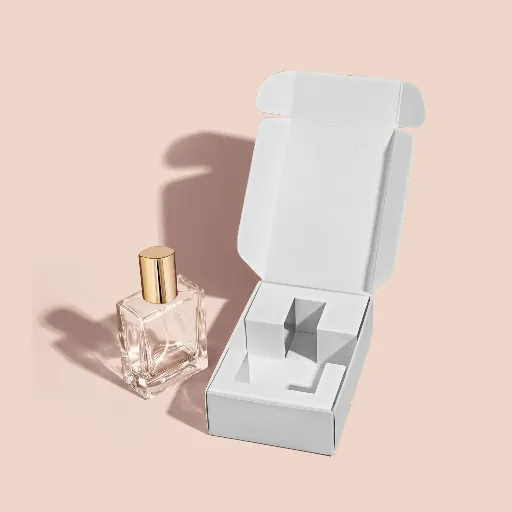
🌿 Minimalistic & Eco-friendly
Perhaps one of the greatest trends in perfume packaging is the shift toward minimalistic and environmentally conscious packaging. Brands are increasingly turning to sustainable materials, such as recycled glass, biodegradable plastics, and refillable containers, to minimize any added environmental impact.
📱 Smart Packaging Integration
Further technological advancements have led to the emergence of innovative packaging, which often features QR codes or NFC tags. Such elements grant consumers access to more detailed product information, verify authenticity, or provide instructions-greatly enhancing the customer experience whilst remaining functional.
✨ Customization and Luxury
Another notable trend feature is personalization and luxury, where custom branding, novel bottle shapes, and superior finishes are employed; however, such designs are intended to truly linger in one’s mind, thereby helping the brand stand out in a saturated market.
⚖️ Lightweight & Functional
Designers are now focused on creating lightweight packaging to increase transport efficiency and reduce carbon footprints. Functional options like modular designs or refill systems are in vogue, balancing design practicality with environmental concerns.
🔄 Circular Economy Framework
In the end, the working framework of a circular economy is bringing in changes to packaging design, loop closure via rethinking the after-life scenarios by pushing for reusability programs, refill systems, or partnerships that could aid return and ecosystem-oriented recycling schemes.
Smart Packaging Solutions for Modern Perfume Brands
🚀 Innovative Technologies Transforming Perfume Experience
Offering more innovative methods for enhancing functionality, sustainability, and consumer engagement in the new world of perfume, smart packaging solutions can leverage new technologies to completely transform the perfume experience.
1. NFC-Enabled Packaging
An NCF tag enables consumers to interact with the perfume packaging using their smartphones. By scanning an NFC tag, detailed product information, authentication, and even suggestions for complementary fragrances could be provided, thereby bolstering customer confidence and satisfaction.
2. QR Code Integration
QR codes are an ample, practical, and cost-effective means of directing consumers to a digital property. Now, more than ever, perfume packaging includes QR codes directing to the fragrance story, sustainability practices, or tutorials on best use, thus enriching the brand experience.
3. Active Packaging for Preservation
Oxygen scavengers, UV-blocking materials, and other such active package solutions help maintain fragrance quality during storage. Advancements increase shelf life and prevent the precarious balance of perfumery compositions, promising excellence.
4. The Eco-Smart Refills and Digital Tracking
Refillable packaging systems are now integrating digital tracking. Customers can efficiently manage refills through app connection to the smart bottle, promoting sustainability while providing easy usability insights.
How Design Influences Consumer Perception in Perfume
🎯 The Power of Design Psychology
73% of consumers consider packaging design when making purchase decisions
Design plays a significant role in shaping consumer perception in the highly competitive perfume industry. Aesthetics, ergonomics, and material selection can significantly impact a consumer’s perception of the product’s quality and their desire to purchase it, including fragrance. Consumer perceptions about packaging and purchase decisions also vary: simpler, more sophisticated designs tend to project a worthy image of luxury, while louder packaging appeals to the younger set, who are more conscious of trends.
Moreover, the introduction of innovative elements with textured finishes, metal highlights, or customized engraving brings forth a multisensory experience that caters to maximizing consumer expectations of personalization. The phrase “luxury perfume bottle design” has experienced a continuous surge in queries, underscoring the notion that initial interest in any luxury packaging is often determined by its aesthetic appeal. Ultimately, design and functionality work together to tell the story of a brand, creating a genuine emotional connection with consumers who adopt it, thereby ensuring sustained loyalty and interaction.
Strategic Procurement and Brand Excellence
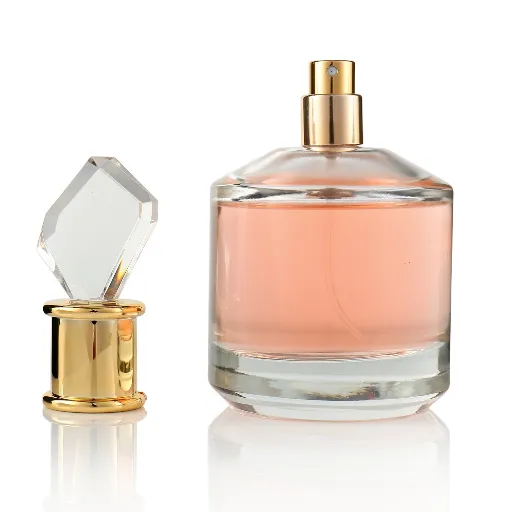
Effective Procurement Strategies and Brand Differentiation
An effective procurement strategy is key to brand differentiation, as it aligns supply chain practices with the brand’s philosophy and positioning. By engaging with sustainable sources, a brand lends itself prestige and attracts a specific customer base. Moreover, strategic sourcing activities, in which suppliers are involved with quality being the primary concern rather than price, can pave the way for differentiated products with a premium stature. Procurement also involves retaining value, forecasting trends, and mitigating risk through the use of data analytics. Integrating procurement strategies with brand identity will foster greater consumer trust and consolidate competitive advantages in an already crowded market.
The Role of Procurement Leaders in Perfume Packaging Decisions
Procurement leaders play a vital role in ensuring perfume packaging aligns with the brand and consumer expectations. They collaborate with supply chain design teams to determine material selection, functionality, and aesthetic appeal while keeping costs in check. Sustainability concerns, on the other hand, must also be taken into consideration, as consumers are placing an increasing emphasis on eco-friendly packaging.
Procurement teams can identify materials or trends, such as reusable or biodegradable packaging, by leveraging data and market insights to create a more positive brand perception. Procurement leaders are also responsible for addressing the complexities of the supply chain in sourcing packaging materials, which must be of high quality and ethically sourced, while ensuring timely delivery to meet production demands. Hence, the decisions now impact not only how well the product sells and how well the packaging aids in selling it but also the environmental consciousness of the brand and the critics that arise due to the obligations toward emerging sustainability regulations.
How Strategic Sourcing Affects Perfume Brand Image
Strategic sourcing is a crucial aspect in shaping a brand’s image for perfumes, as it directly impacts key variables such as quality, sustainability, and innovation. Today’s consumer market is highly concerned with brands that act in an environmentally and ethically responsible fashion. Choosing the right suppliers that provide environmentally friendly and sustainable materials will, in turn, enable brands to promote themselves in line with consumer values, thereby cementing their reputation and gaining loyalty. Similarly, sourcing fine ingredients contributes to delivering an aroma-giving good olfaction experience that is instrumental to sellability.
Beyond such measures, strategic sourcing enables brands to remain nimble in the face of market demands and stay ahead of industry trends. It considers quick rotation through new materials, such as alternatives to synthetic fragrances or recyclable packaging solutions, which lend credibility to the company as a modern and eco-conscious one. By working closely with suppliers and managing their relationships, brands can ensure consistent quality, mitigate risks of supply disruption, and increase their stance on CSR, which is expected to wield a twin impact of consumer perception and brand equity.
Reference Sources
- 📚Packaging procurement strategy for cost savings and sustainability – Discusses strategies to cut costs while meeting sustainability goals in packaging procurement.
- 🌱 How Sustainable Packaging is Transforming the Fragrance Industry – Focuses on reducing waste, using eco-friendly materials, and recyclability in the fragrance industry.
- 🚀 Sustainable and Smart Packaging Reshaping the Perfume Industry – Explores how companies balance sustainability with cost-effectiveness and visual appeal in perfume packaging.
- 💰 5 Strategies to Reduce Costs and Meet Demand for Empty Perfume Bottles – Provides insights into cost-saving strategies in perfume bottle production.
- 🔬Perfume Packaging Meets Sustainability & High Tech – Highlights sustainable strategies like material circularity, optimization, and refill/reuse in perfume packaging.
Frequently Asked Questions (FAQs)
❓ What is a strong packaging procurement strategy?
The packaging procurement strategy involves aligning packaging procurement methods with the overall business strategy and sourcing the necessary materials and services to ensure efficient packaging procurement. It would ensure that the process delivers on time, is cost-efficient, meets customer requirements, and enhances operational efficiency.
⚠️ What are the challenges in packaging procurement?
Changes in the price of packaging materials, difficulties in supplier relationships, quality maintenance, and customer satisfaction are all issues in packaging procurement. Furthermore, procurement experts will have to face a complex packaging supply chain when sourcing greener packaging materials.
🌱 How does sustainable packaging impact the packaging procurement process?
Sustainable packaging places crazy emphasis on the procurement process by favoring environmentally friendly packaging materials and methods. This approach not only aligns with the customer’s expectations of ecologically responsible product purchasing but also enables the reduction of overall packaging costs through efficient sourcing strategies that may provide process or supply chain-related cost savings.
🏭 Why is choosing the right packaging supplier so important?
Choosing the right packaging supplier is vital because it will directly impact the quality and reliability of the packaging materials and services. A best packaging supplier that will cater to specific needs, give tailored packaging solutions, and aid the overall business strategy in delivering on time without cost management.
⭐ What about packaging material quality? Does it matter to customer satisfaction?
Packaging material quality plays a crucial role in determining consumer satisfaction, as it significantly impacts the perception of the product and its brand. Quality ensures that the packaging protects the products during transportation and storage, meeting customer expectations and enhancing the overall customer experience, which in turn encourages repeat business and positive reviews.
📋 Why is a sourcing plan essential in packaging procurement?
The sourcing plan is primarily vital in packaging procurement, as it determines the sourcing strategies for the packaging materials and services required. It enables the business to identify potential suppliers, assess their shipping capabilities, and define clear goals and objectives for their procurement efforts, which are aligned with the packaging vision and the overall business strategy.
🎯 Key Takeaways
As a brand, you may want to create less waste, or as an industry participant, you can come up with fresh ideas. This perfect guide comes with information on how you can develop packaging, precisely how your consumers will expect it, and how you will achieve your goals. Balancing beauty with function and sustainability is what a successful perfume packaging procurement strategy is all about.

